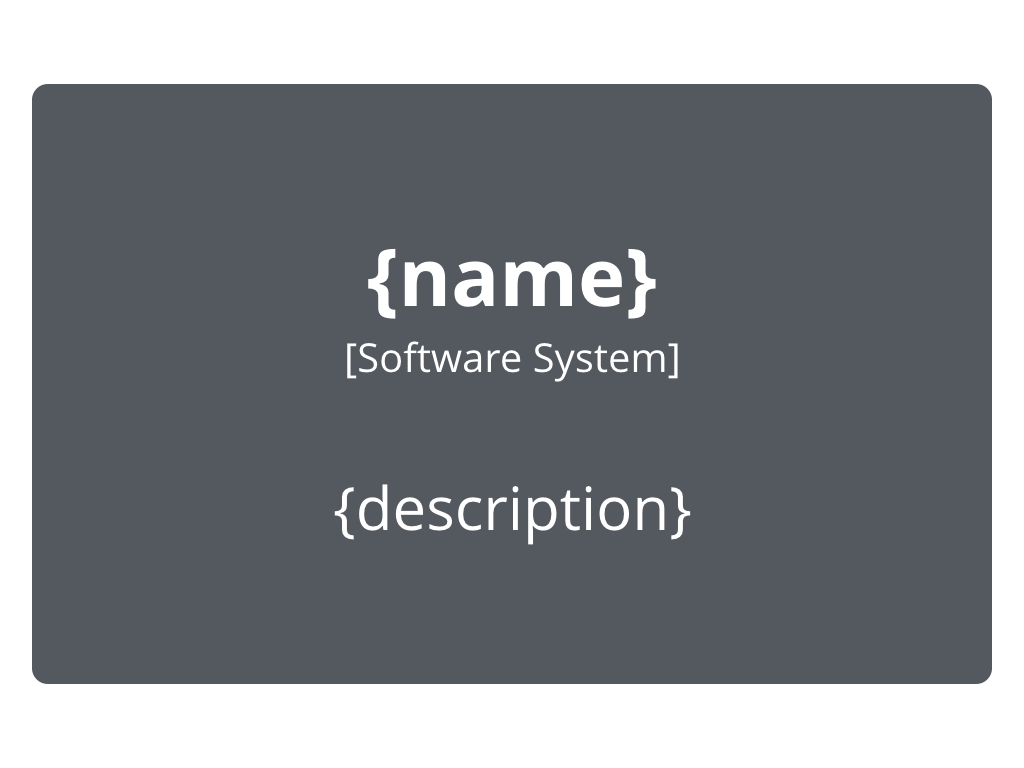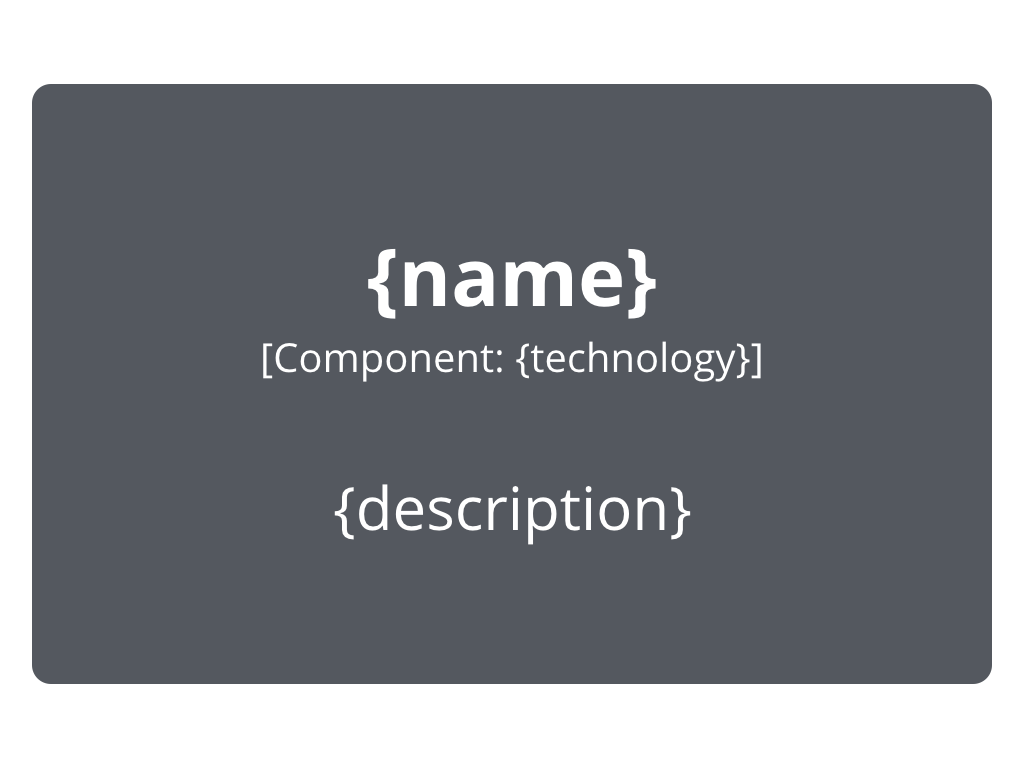C4 Notation
This article provides an overview of C4 Notation.
Introduction
The C4 Model focuses on clarity and simplicity in representing software architecture. Its notation is designed to make diagrams easily understandable for technical and non-technical audiences. While C4 is notation-agnostic, it encourages a consistent and minimalistic approach emphasizing essential details over complexity. Here’s a breakdown of the core elements in C4 notation and their roles in creating practical architectural diagrams.
Core Elements
- People (Actors):
- Represented by a stick figure or a labeled box, depending on the medium.
- Purpose: Depict the individuals, roles, or personas interacting with the software system.
- Examples: End users, administrators, external clients, or other stakeholders.
- Software Systems:
- Represented as large labeled boxes.
- Purpose: Highlight the primary systems, applications, or services involved.
- Types:
- Internal Systems: The systems being designed or managed.
- External Systems: Third-party or legacy systems interacting with the internal system.
- Containers:
- Represented as nested boxes within a Software System.
- Purpose: Break down a system into significant building blocks that execute its functionality, such as applications, APIs, or databases.
- Examples: A web application, a mobile app, a microservice, or a database.
- Components:
- Represented as smaller boxes inside Containers.
- Purpose: Detail the internal structure of containers, identifying major responsibilities and their interactions.
- Examples: A service module, a controller, or a library within a microservice.
- Relationships:
- Represented as arrows between elements, with labels describing the nature of the interaction.
- Purpose: Illustrate how people, systems, containers, and components communicate or share data.
- Examples: HTTP requests, database queries, or message-passing mechanisms.
Key Attributes
- Labels and Annotations:
- Each element is labeled with a clear and concise description.
- Relationships are annotated to explain their purpose or data exchanged.
- Color and Visual Distinction:
- While C4 is minimalistic, color coding or shading can differentiate element types or emphasize specific parts of the diagram.
- Examples: Using one color for external systems and another for internal ones.
- Simple and Flexible Shapes:
- Avoid overly complex symbols; simple rectangles, arrows, and stick figures suffice.
- The goal is accessibility, whether the diagram is drawn on a whiteboard or using diagramming tools.
- Legend or Key:
- Each diagram includes a legend explaining the notation used, ensuring it is self-explanatory even for new viewers.
- Minimalism:
- Unnecessary details are avoided. The diagrams focus only on the elements relevant to the level of abstraction being presented (e.g., Context, Container, Component).
How These Elements Interact
C4 diagrams are hierarchical, with elements at each level of abstraction building on those in the previous level. For example:
- On the first level, only People and Software Systems are shown, depicting the system’s external environment.
- On the second level, the focus shifts to the internal structure of a single Software System, introducing Containers and their relationships.
- On the third level, the focus moves deeper into a specific Container, showcasing its internal Components and their interactions.
Benefits of C4 Notation
- Clarity Across Audiences:
- C4’s focus on simplicity ensures diagrams are understandable by both technical teams and business stakeholders.
- Adaptability:
- It works well with digital tools or physical whiteboarding, making it versatile for various workflows.
- Focus on Essentials:
- By emphasizing only the most critical elements at each level, C4 notation prevents diagrams from cluttering.
Recommended Reading
Articles
- Brown, S. “C4 Notation”. Detailed description of the C4 Notation.




